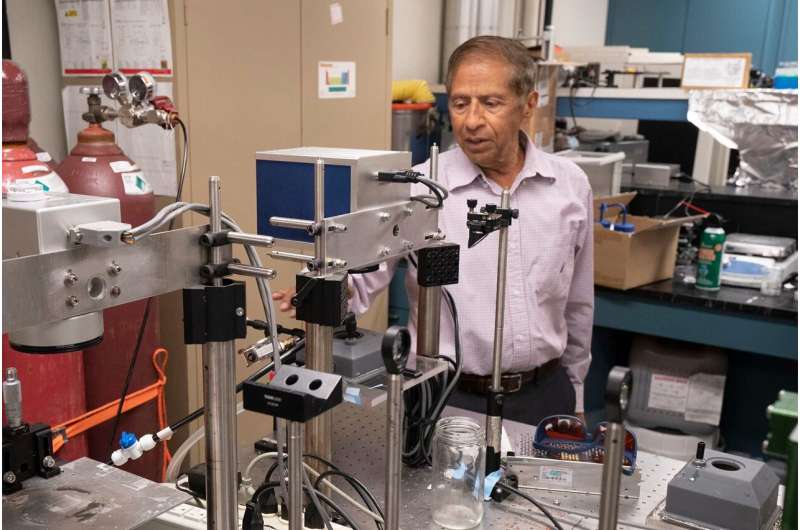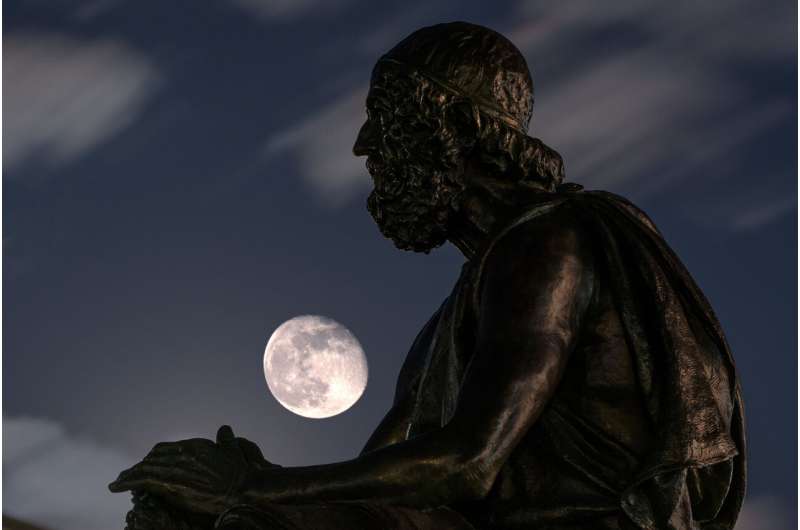"Certain types of chemical composition could tell us if there was life there. And by scanning, there may be trace evidence of biological life in the form of cells."
He added, though, that's just scratching the surface.
The scientists want to answer a host of questions about the terrain's overall makeup, including its subsurface, and how it has evolved. UVA's longstanding strength in photonics will be essential.
MOCAPS to rove and look
Gupta's ambitious project goes by MOCAPS for short. That stands for the longer-winded "Miniaturized, Multifunctional, Microscopic Organic/Inorganic Composition Analytical Probe for Planetary in situ Spectroscopy."
Basically, he and his collaborators are constructing a scientific instrument for an autonomous mini-rover. The optical probe's head will look around and analyze rocks, ice and other ground samples.

The small, tube-like head will weigh less than an ounce.
An efficient size is important in order to conserve space on the flight, and energy while there. Although the probe will roam, the rover probably won't pick up physical objects. All the information transferred will be electronic and beamed to NASA in real time.
The head of the probe will yield the information using laser spectrometry—relying on how light scatters to identify mineral elements—and an auto-focusing lens that can take ultra-high-resolution photography at the microscopic level.
"The spectrometry would work at an extreme sensitivity level, one part per billion," Gupta said. "This will also be the first probe to get a microscopic image, which will get you into human-hair type resolution."
Probing the past and future
The moon doesn't sustain any form of life that doesn't bring its own adaptive technology, because there's no atmosphere. That's why astronauts wear spacesuits.
Research published in the journal Astrobiology in 2018 theorized, however, that conditions favorable to at least simple lifeforms such as bacteria may have existed on the moon during two periods when the Earth's natural satellite likely did hold an atmosphere—but both were billions of years ago.
Active microbes potentially could have thrived in pools of water, for example.
Gupta said understanding past and present conditions—including knowing where life might have flourished and how it might have thrived—will be important in preparing for the future.
As a practical concern, any future moon colonists would not just need to bring extra stuff, such as a greenhouse for growing food; they would need to understand the type of soil they are working with and how its composition changes over time.
"If they sent up plants, the plants obviously cannot grow in the cold," Gupta said. "They would have to create a balloon-type environment, and for the mineral nutrients, they would have to extract them from the soil and use them the way they need."
But for MOCAPS, the moon won't be an end in itself. It will also be a proving ground, a test in preparation for more challenging environments in the solar system.
Explore further



